How to replace the electric clutch on a zero-turn riding mower
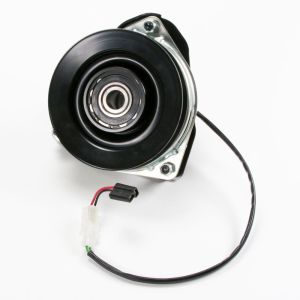
This DIY repair guide shows how to replace an electric clutch on a zero-turn riding mower. The electric clutch is attached to the engine crankshaft and controls the mower’s cutting blades. If the mower’s blades won’t engage or disengage correctly, replace the clutch with a manufacturer-approved riding mower part.
Follow the steps in this repair guide and video to replace the electric clutch on common Craftsman, Troybilt, MTD, Husqvarna, Toro and Cub Cadet zero-turn riding mowers.
See all our riding mower and lawn tractor DIY repair guides for more step-by-step instructions.
This video explains how to replace the electric clutch on a zero-turn riding mower.
Instructions
- 01.
Disconnect the spark plugs
Move the mower to a work area on a hard, level surface and set the parking brake. Disconnect the spark plug wires.
Tip: Enlist a helper to assist you when you remove the clutch.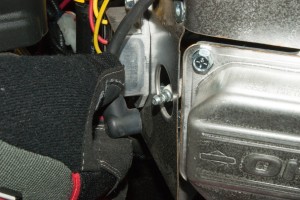
PHOTO: Disconnect the spark plugs.
- 02.
Release the blade belt
Lower the mower deck to the lowest cutting position.
Remove the left pulley cover from the mower deck.
Push in the blade belt idler pulley to release belt tension and then roll the blade drive belt off the left blade pulley.
Reach under the rear of the mower frame and remove the blade drive belt from the electric clutch.
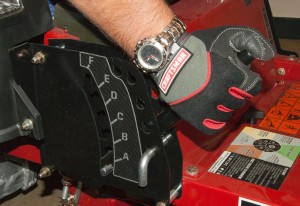
PHOTO: Lower the mower deck.
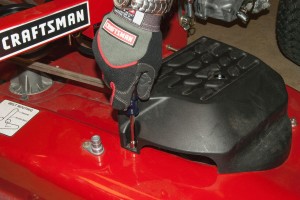
PHOTO: Remove the pulley cover.

PHOTO: Roll the blade belt off of the pulley.

PHOTO: Release the blade belt from the electric clutch.
- 03.
Remove the electric clutch
Unplug the electric clutch wiring harness beside the motor.
Remove the mounting screws from the flywheel cover and pull the cover off to access the flywheel nut.
Have a helper hold the flywheel nut stationary while you remove the mounting bolt from the clutch.
Pull the electric clutch off the engine crankshaft.
Tip: Note the routing of the electric clutch wiring harness when pulling the clutch off the engine shaft.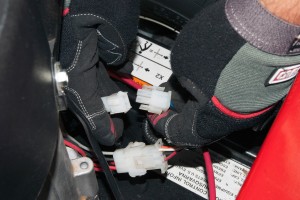
PHOTO: Unplug the electric clutch wire harness.
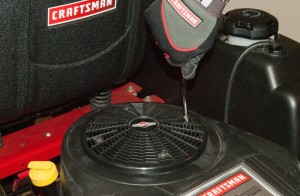
PHOTO: Remove the flywheel cover screws.
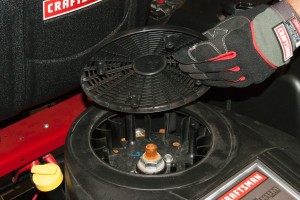
PHOTO: Remove the flywheel cover.

PHOTO: Hold the flywheel nut stationary.
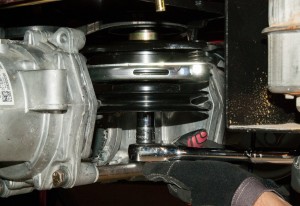
PHOTO: Remove the electric clutch mounting bolt.
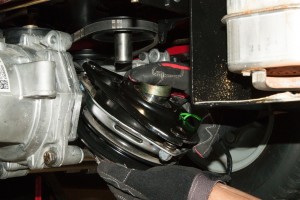
PHOTO: Remove the electric clutch.
- 04.
Install the new electric clutch
Position the bushing on top of the electric clutch.
Line up the slot in the electric clutch pulley with the key in the engine shaft and push the electric clutch onto the engine shaft.
Make sure the tab in the electric clutch bracket engages the mounting slot on the electric clutch frame.
While your helper holds the flywheel nut, reinstall the electric clutch mounting bolt.
Reattach the flywheel cover.
Reconnect the electric clutch wire harness.
Tip: Make sure that the electric clutch wire harness is routed to the engine correctly on reassembly.
PHOTO: Install the new clutch.
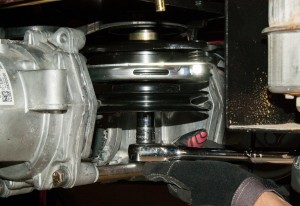
PHOTO: Tighten the clutch mounting bolt.
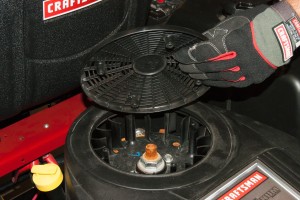
PHOTO: Reattach the flywheel cover.
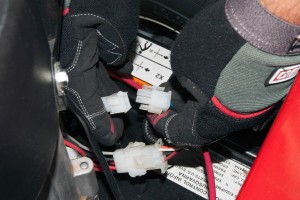
PHOTO: Reconnect the wire harness.
- 05.
Reinstall the blade belt
Reinstall the blade drive belt onto the electric clutch.
Push in the blade belt idler pulley and roll the blade belt onto the left blade pulley.
Reinstall the pulley cover.
Tip: Make sure that the blade belt is routed correctly when reinstalling the blade belt.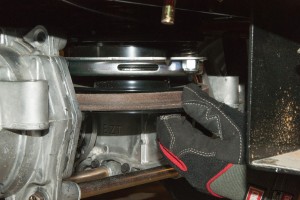
PHOTO: Reinstall the belt on the electric clutch.
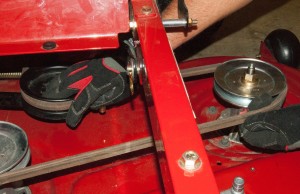
PHOTO: Roll the belt on the pulley.
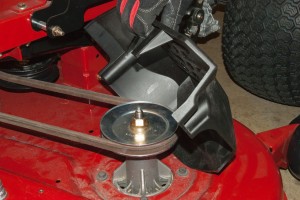
PHOTO: Reinstall the pulley cover.
- 06.
Reconnect the spark plugs
Reconnect the spark plug wires to the spark plugs.
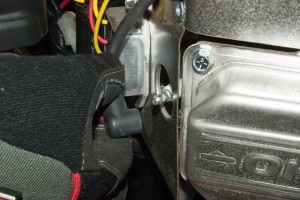
PHOTO: Reconnect the spark plugs.
Most common symptoms to help you fix your riding mowers & tractors
Choose a symptom to see related riding mower and lawn tractor repairs.
Main causes: faulty battery, bad alternator...
Main causes: damaged cutting blade, worn deck pulley, damaged mandrel pulley, loose fasteners on mower deck components...
Main causes: damaged tie rods, bent or worn wheel spindle, worn front axle, damaged sector gear assembly...
Main causes: worn or broken blade belt, broken belt idler pulley, blade clutch cable failure, bad PTO switch, damaged ma...
Main causes: punctured tire or inner tube, leaky valve stem, damaged wheel rim...
Main causes: engine overfilled with oil, leaky head gasket or sump gasket, damaged carburetor seals, cracked fuel pump, ...
Main causes: clogged carburetor, damaged flywheel key, dirty spark plug, stale fuel, improper valve lash, engine needs a...
Main causes: shift lever needs adjustment, neutral control needs adjustment...
Main causes: worn or broken ground drive belt, bad seat switch, transaxle freewheel control engaged, transaxle failure, ...
Most common repair guides to help fix your riding mowers & tractors
These step-by-step repair guides will help you safely fix what’s broken on your riding mower or lawn tractor.
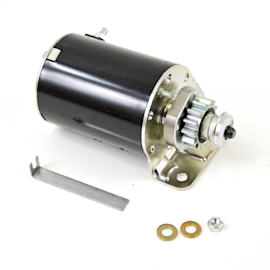
How to replace the starter motor on a riding lawn mower
If you hear the solenoid click but don’t hear the starter motor spin when you turn the key, follow these steps to replac...
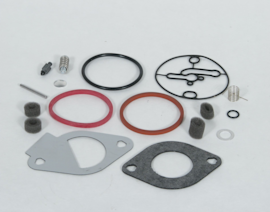
How to rebuild a riding lawn mower carburetor
Get your sputtering carburetor running smoothly in 60 minutes....
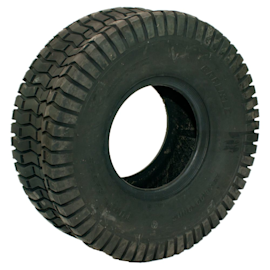
How to replace a riding lawn mower rear tire
Your mower can’t run on a damaged rear tire. Here’s how to install a new one....
Effective articles & videos to help repair your riding mowers & tractors
Use the advice and tips in these articles and videos to get the most out of your riding mower or lawn tractor.

Learn about all the convenient features on our Sears PartsDirect website that make your parts purchases easier....

Get answers to frequently asked questions about Sears and Sears PartsDirect....
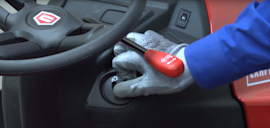
Check the starter solenoid, starter motor, wiring, battery and engine....